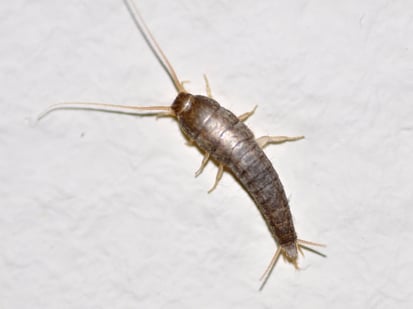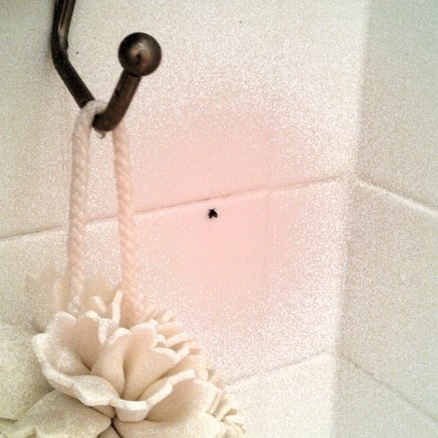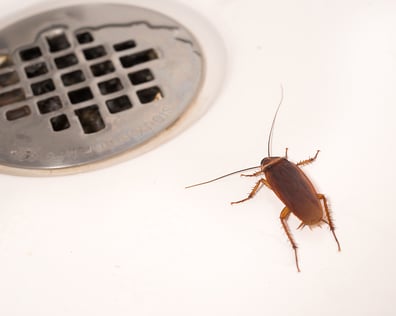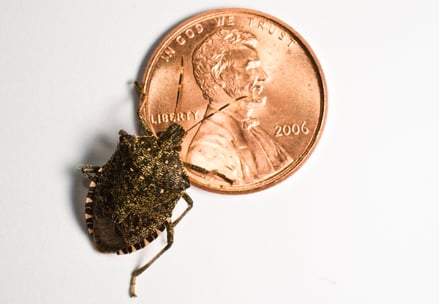Gnats In My Bathroom
The main reason that you see bugs in your bathroom is easy to remember: moisture. Bugs love moisture and are attracted to any areas where it exists. The best case scenario for an insect is somewhere that has moisture or humidity, and food. With that, they aren't likely to move out any time soon, even if it means sharing space with you. Some bugs end up in sinks or tubs because they simply fell in and can't get back out. Others came in on their own accord and avoided these traps all together. Let's go through common bathroom bugs; what they are and why they're there. What are the tiny black bugs on the bathroom floor? Not only can they come up the drain, but insects found in your bathroom can also enter simply through cracks and crevices, open windows, and from other parts of your home where they already existed. Photo Credit: https://woodfinandmah.wordpress.com/ This is one of the most commonly asked questions about pests in bathrooms, although it may be hard to find answers on Google. Small black bugs found in bathrooms are usually sewer flies or drain flies. They look like tiny black bugs with wings and tend to appear around drains in tubs and sinks. The presence of these flies is usually an indicator that a plumbing problem exists. Drain flies can surface in very large numbers when they make their way indoors. They breed in organic matter that is in a late stage of decay and is often found breeding inside of sewers and drains. They often enter the structure by escaping them from the sewer main through a break in the lie or through dry drain taps associated with drains that are infrequently used. These flies can also breed inside of drains that have accumulations of organic matter or any other area where water and organic decay exist. Of course, you could be seeing small nuisance ants, but when clients have difficulties identifying this type of pest, it's usually a drain fly. If you have ants in your bathroom, you can schedule service online today for same day or next day technician dispatch. Simply enter your problem and preferred time. If you need help differentiating small nuisance ants from drain flies, please give our office a call, and we can help you. Why do cockroaches come up the drains? Cockroaches prefer to live in moist, dark, and non-freezing areas including sewers and piping. Apartments and rowhomes have shared walls between units as opposed to residential standalone homes that are not connected, which makes them more likely to have problems with cockroaches. Cockroach infestations occur in both, but can spread in different ways. Apartments Cockroaches usually get into apartments not only through the drains, but through entry points around the structure and on boxes that are carried in from elsewhere. Something that makes cockroach infestations especially different within apartments and row homes is that they have the ability to travel between units. Because their eggs are very small, they can travel through walls, small openings between units, electrical outlets, vents, and under doors with ease. Even a perfectly clean apartment can be susceptible to cockroach activity. Residential Standalone Homes Most types of cockroaches live outdoors when it's warm, foraging for food and living in dark areas such as mulch and wood piles. When it's cold, cockroaches enter homes to find food and moisture that disappears in New Jersey and Pennsyvlania. They can slip into homes through small openings around your home, by stowing away in a bag that you bring into your home, or coming up through drains when there is heavy rain or very large populations looking to relocate and expand. The particles and sludge that builds up in sewers are their preferred food sources, making easy to access plumbing a cockroach paradise. In our area, you will mostly find American and German cockroaches. They are not pests that get trapped in sinks and bathtubs. In bathrooms, you can find them pretty much anywhere from cabinets to toilets and under sinks or vanities. In addition to debris, cockroaches love human food and toothpaste. How did stink bugs get in my bathroom? Stink bugs are another common invader within residential homes in New Jersey and Eastern Pennsylvania. Similar to the behavior of ladybugs and boxelder bugs, they make their way into humanmade structures by hibernating or what is called "overwintering," within wall voids seeking out warmth in the fall. They find entry points between cracks and crevices around the exterior of your home that may not be visible at first glance. The brown marmorated stink bug is the most abundant in our area and is what you will see in your bathroom. As you can see above, they are about the size of a penny so they don't need a giant hole to enter homes. They are not destructive so they aren't an immediate threat to your home. However, many clients call in about stink bug treatments because they simply don't like seeing pests in their home. Why do bugs come to my bathtub at night? Several types of crawling pests find refuge in sewers and piping because it's wet and full of food sources. The main problem clients experiencing is when they surface into bathrooms by way of drains and connecting pipes in areas such as your bathtub in search of food. Because they lack wings, these insects become trapped and end up staying in the bathtub until you go to clean or take a shower. This is also true for any other pest that is drawn in by the lure of moisture, falling in and not being able to get back out. How can I stop bugs from coming into my bathroom? To prevent bugs from coming into your bathroom, you have to create the least ideal environment for their survival. Remove the elements that draw bugs in, and you will be much more likely to keep them out. Try out the following tips: How can Cooper help? Cooper Pest Solutions provides both one-time and year-round home programs that target bugs found in bathrooms such as silverfish, cockroaches, drain flies, and more. One-Time Services Cooper's One-Time Services use a targeted application to eliminate and control one specific pest. This type of service is implemented when there is an already existing pest problem in your home and not to prevent future infestations. Coverage with all of our One-Time Services is 90 days. During this period, you will have unlimited service calls to ensure that your current pest problem is eliminated. Each One-Time Service targets a single pest. If you have multiple pests, a One-Time Service is not the right program for you. Home Traditional Program The Home Traditional Program provides year-round coverage for homeowners who want to keep their home pest free. This service includes 4 technician visits per year, one for each season. During the inspections, a Cooper technician will inspect your home for evidence of pest activity and treat accordingly. Both of our Home Programs ensure that your home is protected against future pest activity. Over 20 common household pests are covered including most common bathroom bugs. If you are experiencing pest activity at any time during the year, you are entitled to unlimited service calls. All services are 100% guaranteed. Home Intensive Program The Home Intensive Program is also a year-round preventative pest program that provides homeowners with peace of mind, knowing their home is protected. All pests covered under the Home Traditional Program are included, with the addition of bumble bees, hornets, carpenter ants, yellow jacket nests located above 6 feet high, grain weevils, Indian meal moths, red flour beetles, rice weevils, saw-toothed grain beetles, cicada killers, firebrats, fleas, silverfish, additional services including comprehensive reporting, ladder work up to 24 feet, pruning, sealing of cracks and holes, and coverage for additional structures on your property including mailboxes, play sets, pool houses, and storage sheds. For fast service, call Cooper at 1-800-949-2667 for a Free No-obligation inspection at your home or fill out the form on our website.




Source: https://www.cooperpest.com/blog/why-are-there-bugs-in-my-bathroom

0 Komentar